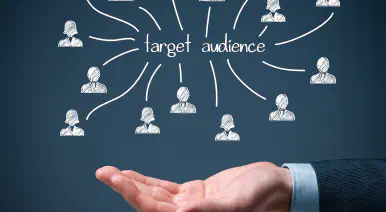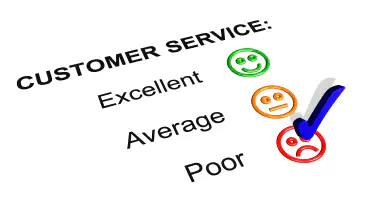Customer Engagement and Customer Loyalty. Cause or Effect?
Customers loyal to a place of business are repeat customers. Loyal customers are those customers who refer others to that place of business. Loyal and satisfied customers give good reviews during customer satisfaction surveys. And, loyal customers are those who provide glowing testimonials about business services and products.
Enticing customers and other stakeholders to become loyal patrons has become big business, with defined strategies and business resources allocated to support loyalty initiatives. And loyalty programs cut across every sector of every industry, including hardware stores, restaurants, grocery stores, hotel and motel chains, and banks.
“Companies spend more than $2 billion on loyalty programs a year,” states Tim Donnelly, managing editor of the blog Brokelyn.com. “Statistics show the average American household belongs to about 14 different rewards programs, even if they’re only active in six.”
Businesses understand that most customers value quality products and services. And, customer satisfaction generates customer loyalty, repeat business, and profitability.
Businesses cultivate customer loyalty in many ways.
Some businesses offer coupons that provide discounts on designated items, but these may not cultivate loyalty and repeat business to the same store since discounts can vary by item.
Pita Republic offers a punch card and a free sandwich after purchasing sandwich number ten. While some perceive this 10% discount to be of little value, it is enough to keep others going back.
Office Depot offers rebates on some office equipment; some say they never receive the rebate applied for, while others swear by the process.
Many grocery stores, like Safeway and Winn Dixie, offer customers a rewards card that, when produced, entitles them to a lower price on certain items.
Bank of America offers a credit card that aligns reward points with dollars spent; customers redeem reward points for desired merchandise. Customers are often motivated to use their card more often than they intended to accrue enough points to acquire the desired item.
Loyalty programs are not unique to the United States. The French retailer, Carrefour, has a dual loyalty program whereby customers earn and redeem points for purchases made in the store as well as earn other points for all purchases made using a Carrefour branded credit card.
The SmartClub loyalty program in Shanghai gives SmartPoints to participating residents each time they use the bus, subway, or taxi. These points may be combined with points obtained from purchases made at other SmartClub retailers, including McDonalds, bookstores, and movie theaters.
And, the MTR Club offers loyalty cards to the 3.65 million people a day who travel via the MTR railway system in Hong Kong.
Given the rapid advances in technology, most businesses have moved from plastic or paper cards in favor of garnering customer loyalty online. The advantage of an electronic loyalty program is that customer account information is easily stored and accessed.
Foursquare is a company based on a game-designed model. People earn badges, or virtual reinforcing awards, for checking in at places they encounter in their daily lives. They subsequently receive local money-saving deals. Eight million people use the Foursquare app regularly.
“Smartphone apps do more than just offer a high-tech alternative—they also provide businesses with a trove of useful information about their customers,” states Issie Lapowsky, reporter for Inc.com. “Several start ups like Cardstar, Checkout, PlacePop, and Cardagin have launched loyalty-card apps to help businesses attract and reward customers.”
Electronic loyalty programs provide businesses with critical marketing data that surpasses that available from magnetic or paper cards, giving even small businesses access to sophisticated analyses.
Whatever the type of customer loyalty program, the goal remains the same – to motivate customers to make repeat purchases and persuade others to do the same.
The big question is, are these ‘incentives’ enticing enough to keep customers coming back? Are customers subsequently loyal to a store or to a brand? Have customers become savvy enough to simply optimize offers that give them the best deal? It might look like loyalty on the outside; inside, however, the customer may be fickle — shopping and giving their business to the store offering the best deal at the time.
So, with the changing economy and myriad ways of doing business, what can businesses do to ensure repeat business?
“Customer loyalty is no longer just about points, discounts, miles, and rewards; it is about the way processes, technologies, ideas, and interactions engage individuals with the brand,” notes Mark Johnson of a research consulting firm. “The only way to achieve loyalty is through deeper engagement.”
And, engagement in this case refers to repeat interactions that strengthen the emotional, psychological, and physical bonds between customers, between customers and a company, and/or between customers and a brand, both on- and off-line.
Customers are engaged if they become involved.
Ron Shevlin, Senior Analyst at Aite Group, LLC, notes that customer engagement can be described in a variety of ways, through product involvement, frequency of purchases, frequency of service interactions, types of interactions, online behavior, referral/behavior intention, and velocity.
To be engaged, involved or committed, customers must genuinely care about the product or service. A customer who makes frequent purchases might be more engaged than one who purchases less often. Shevlin states that the type of interaction between customer and company is perhaps a more telling indicator of engagement than frequency of service, since interacting with a company to check an account balance is very different from a conversation to clarify product specifications.
The time customers spend online can indicate true involvement with the company or brand as customers ask questions, clarify information, participate in discussion forums, or blog about an experience with a product or service. Customers might write a user product review, contribute to product development, or provide additional answers to frequently asked questions. People also frequent sites that provide opportunities to network or meet, such as LinkedIn.
Certainly, customers who refer others to a business are considered to be engaged. The level of engagement will fluctuate as customer behaviors in any of the above categories increases or decreases.
Consider customers to be meaningfully engaged with a company, brand, product, or service if, through their engagement, they actually make a purchase. If customers, either in a store or on a website, simply spend time without making a purchase, they are not considered to be engaged. Time online can be spent clicking through web pages with little or no intent of generating meaningful interaction or engagement with the company or brand.
Consider customer engagement as a continuum. At the low end of the continuum, people simply demonstrate an awareness of the company’s brand, product, or service. Moving along the continuum, they appreciate the quality and relative elements of the product or service. They must actively consider purchasing the product or service to be considered ‘engaged.’
At the midpoint of the engagement continuum, customers make inquiries about the product or service under consideration, clarifying specifications, comparing and contrasting the product to others before deciding how the specifications meet their needs (or not).
At the higher end of the engagement continuum, customers make a decision to purchase (or not). And, if they purchase a product or service and are satisfied with their decision, they often become repeat customers. This retention reflects the highest point on the customer engagement continuum.
Customers can certainly fall along any point on the continuum of engagement, being least engaged at the initial point of product or service ‘awareness’ and most engaged at the point of being a ‘repeat customer’
So, how do businesses facilitate customer engagement?
Incorporating current and emerging technology promotes customer interaction, although businesses must not assume that everyone has some type of technology. Businesses must provide multiple ways in which customers can interact with them, since one approach does not fit all.
Best practices for engaging customers includes two-way communication in the form of real-time live chats (online or off) which allow for immediate and meaningful interactions. An online presence offers ways in which customers can interact with the company 24/7/365. Many companies, including cultural institutions, provide icons in ads or in the store/museum containing Quick Response Codes; customers and visitors alike can scan these codes to obtain discount offers or additional information.
And, companies are generally rewarded with engaged customers when customers receive personalized responses to their questions that truly meet their needs, rather than a generalized response from the frequently asked question repository.
The Northwestern University Forum for People Performance Management and Measurement found that organizations with engaged employees have customers who use the company’s products and services more often and with higher satisfaction than customers of companies with disengaged employees. Do you know what the level of employee engagement is in your business?
Each individual has a preferred way of learning; subsequently, each individual will require a different approach to engage them in business products and services.
“Every encounter must have a compelling business cause and reason to engage with you and your business,” states Michael Petrisko, CIO at Hill International. “Make sure your contact leaves the encounter with the sense that time spent with you and your organization was a valuable use of their time.”
People today have high expectations of businesses and ways in which interactions occur. People no longer remain loyal to a company, brand, product, or service based on history. They remain loyal to a company, brand, product, or service because the company cares enough to create customer engagement strategies that build long term relationships, generates connections between the customer and business at multiple levels, and responds to customer needs and wants in a timely way.
Businesses that initiate, cultivate, and sustain a connection offer what the customer needs when the customer needs it. Engaged customers are loyal customers.
Understanding the needs and expectations of your customers is a prerequisite to engagement and loyalty. Engaging stakeholders by deploying a customer survey is an important way to ensure repeat business. Then, resurvey periodically to gauge the effectiveness of your improvement initiatives.
To learn more about how NBRI can help your organization identify the degree to which you engage stakeholders, contact us now at 800-756-6168.




























 By submitting this form you agree to our
By submitting this form you agree to our